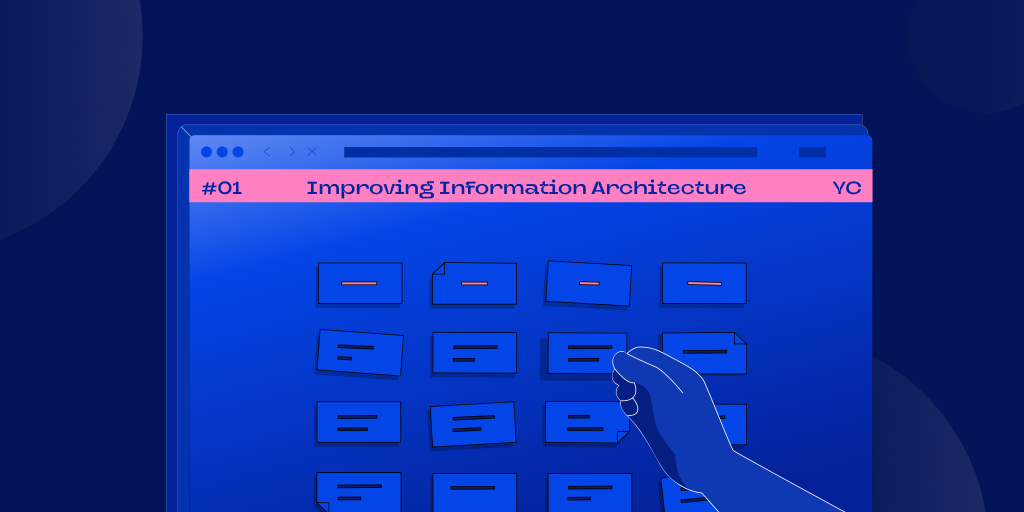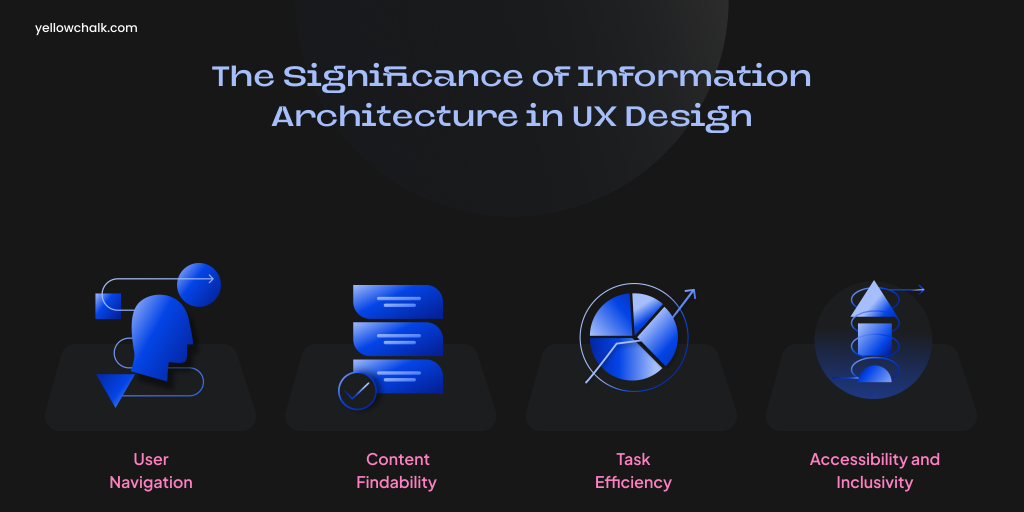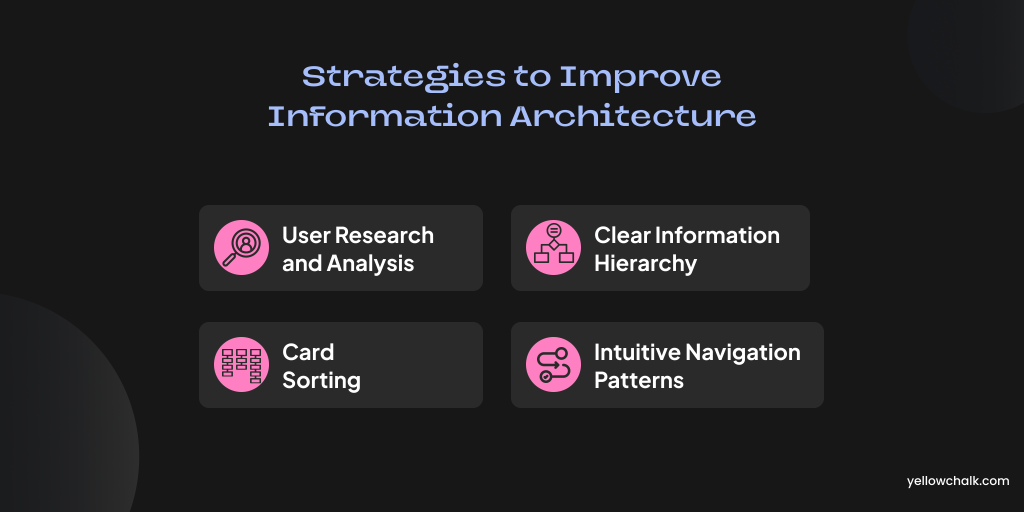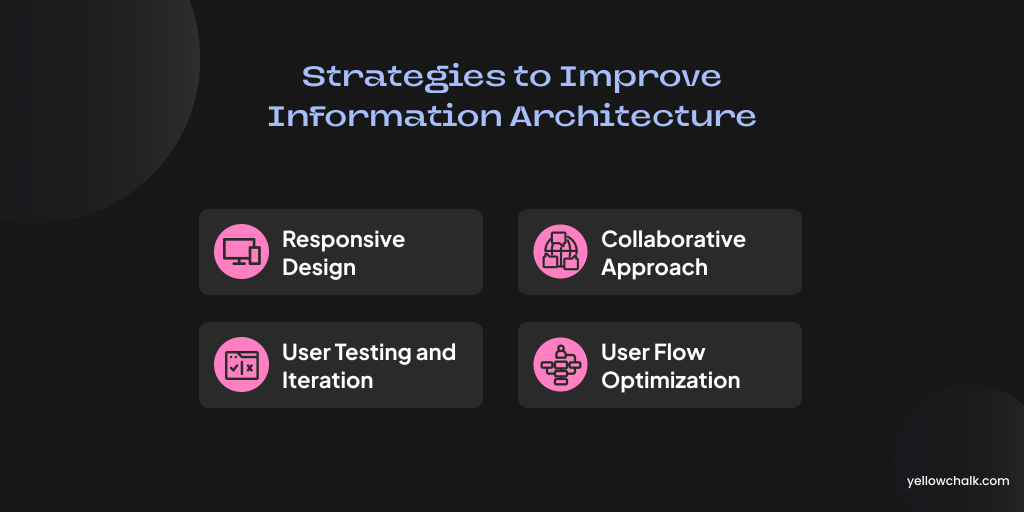GOT A UI/UX
DESIGN PROJECT?
Mastering Information Architecture For UX Success

In today’s information age, paying attention to the finer details of information is absolutely essential. With the vast amount of data and content at our fingertips, overlooking these details can lead to confusion and inefficiency. Imagine a massive library with books scattered all over the place, without any clear organization. It would be a nightmare to find the information you need! This is where Information Architecture (IA) comes in.
Organizations dealing with data must meticulously manage their information architecture. Neglecting this crucial aspect could result in a tangled web of data, making it difficult to retrieve what’s needed when it’s needed.
Information architecture is a critical component of UX design, but is it the same thing? Absolutely not. You can find out more about the difference between the two here. An effective IA ensures that users can navigate through content seamlessly, find what they need effortlessly, and have a positive overall experience. In this blog post, we will provide valuable tips to improve the information architecture on your website and create more user-friendly digital experiences. Let’s dive right in!
Understanding Information Architecture
Information Architecture refers to the process of organizing, categorizing, and labeling content to facilitate easy access and comprehension for users. A well-designed IA establishes a clear information hierarchy and navigation paths, allowing users to accomplish their tasks efficiently and intuitively.
Why is IA Crucial in UX Design

For one, It aids in user navigation. An intuitive IA empowers users to move through a digital product effortlessly. It reduces cognitive load and decision-making, enhancing the overall user experience.
Secondly properly implemented information architecture improves content findability. A well-structured IA ensures that people can quickly find the information they are looking for, increasing user satisfaction and reducing frustration.
Moreover, when information is logically organized, users can complete their tasks more efficiently, leading to higher engagement and retention. This facilitates task efficiency.
Lastly, it enhances accessibility and inclusivity. A thoughtful IA considers a human-centered design approach and focuses on the diverse needs of users, ensuring that all users, including those with disabilities, can access and interact with the content effectively.
Key Areas to Focus On For Enhancing Your IA
- User Research and Analysis
Conduct user research to understand the needs, preferences, and pain points of your target audience.
Analyze user behavior and feedback to identify areas of improvement and opportunities for optimization.
- Card Sorting
Utilize card sorting exercises with users to organize content into meaningful categories based on their mental models.
Analyze the results to create a coherent and user-centric information hierarchy.
- Clear Information Hierarchy
Establish a clear and logical information hierarchy, ensuring that content is categorized based on its importance and relevance.
Use headings, subheadings, and visual cues to communicate the hierarchy effectively.
- Intuitive Navigation Patterns
Implement familiar and user-friendly navigation patterns such as global navigation, local navigation, and contextual navigation.
Utilize faceted navigation to allow users to filter and refine search results.

- User Flow Optimization
Map out the user flow to understand the sequence of steps users take to accomplish their goals.
Identify potential bottlenecks and areas for improvement to streamline the user journey.
- Responsive Design
Ensure that the IA is designed to adapt seamlessly across various devices and screen sizes.
Prioritize content based on the context of use and user needs on different devices.
- Effective Search Functionality
Display search results in a clear and user-friendly manner.
Implement a robust search system that delivers relevant results and supports synonyms and misspellings.
- User Testing and Iteration
Conduct usability testing with real users to gather feedback on the IA’s effectiveness.
Iterate on the IA based on user insights and data analysis to continuously improve its performance.
- Collaborative Approach
Foster collaboration among designers, developers, content creators, and stakeholders to gain diverse perspectives and insights.
Involve end-users in the IA design process to ensure user-centricity.

Conclusion
Information Architecture is a foundational element of successful user experience design. By organizing content effectively, establishing a clear information hierarchy, and implementing intuitive navigation patterns, designers can create digital products that are easy to use and navigate. A user-centric IA enhances findability, task efficiency, and user satisfaction, contributing to higher engagement and improved overall user experience.
As you embark on improving your information architecture, remember to conduct thorough user research, leverage card sorting exercises, and optimize user flows. Implement responsive design and user-friendly search functionality, and regularly conduct user testing for iterative improvements. A collaborative approach that involves diverse stakeholders and end-users ensures that your IA aligns with user needs and preferences, making your digital product a delight to use.
By following these strategies and continuously refining your IA based on user feedback and behavior, you can create more intuitive, efficient, and user-friendly digital experiences that leave a lasting positive impression on your users.
